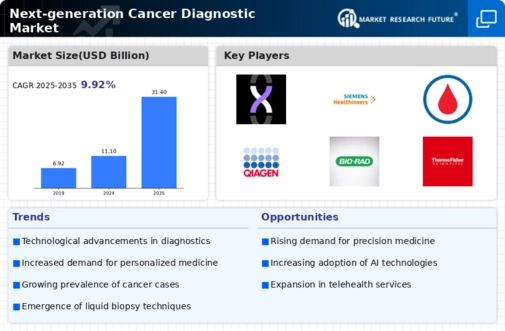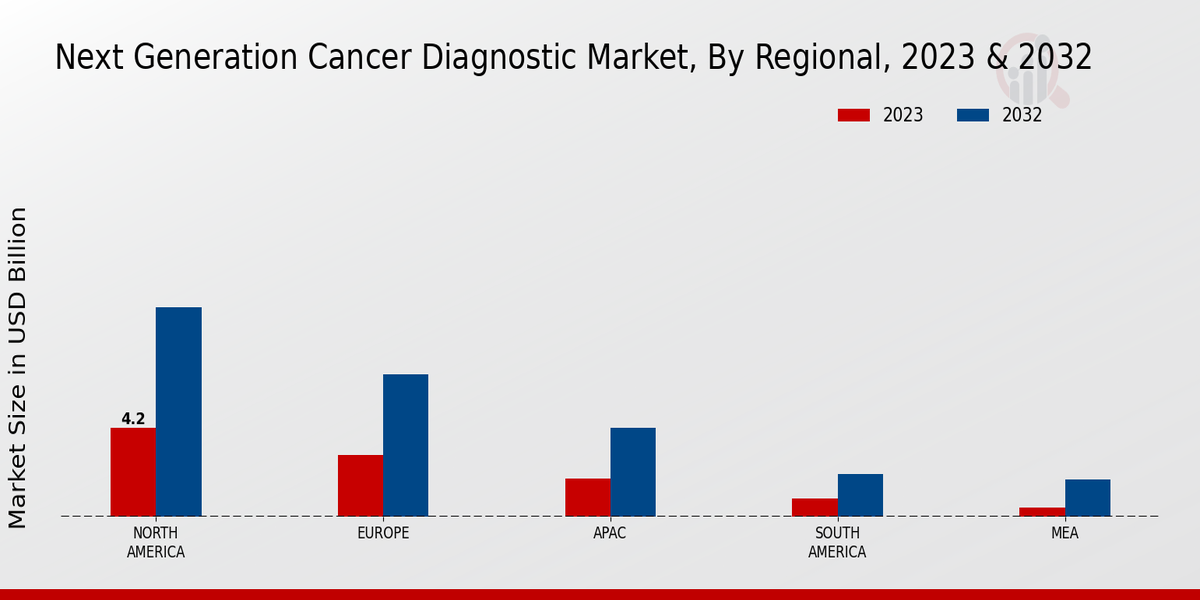The Next-generation Cancer Diagnostic Market is witnessing substantial growth fueled by advancements in technologies such as genomics, molecular diagnostics, and imaging techniques.
The market is characterized by a competitive landscape where numerous companies are engaged in research and development to offer innovative solutions that enhance the accuracy and efficiency of cancer diagnosis.
This dynamic environment is supported by increasing investments in cancer-related research, as well as rising demand for early detection and personalized treatment options. Companies are focusing on strategic partnerships, mergers, and acquisitions to bolster their market position and expand their product offerings.
Additionally, regulatory approvals and clinical validations play crucial roles in maintaining competitive advantages within this rapidly evolving market.
Exact Sciences has carved a niche for itself within the Next-generation Cancer Diagnostic Market by leveraging its expertise in molecular diagnostics, particularly in the area of non-invasive cancer testing. The company's strengths reside in its robust pipeline of innovative diagnostic solutions that cater to various types of cancers, particularly colorectal cancer.
Exact Sciences has established a significant market presence through its flagship product, which is widely recognized for its high sensitivity and specificity, enabling clinicians to detect cancer at earlier stages. This capability not only enhances patient outcomes but also strengthens the company's reputation among healthcare providers.
Their commitment to research and development further reinforces their competitive edge, allowing them to constantly refine existing products while also exploring new diagnostic avenues. Furthermore, strategic collaborations with healthcare institutions have aided in the expansion of their market footprint, enabling them to reach a broader patient population and improve healthcare accessibility.
Siemens Healthineers is another powerful player in the Next-generation Cancer Diagnostic Market, known for its comprehensive approach to medical imaging, laboratory diagnostics, and digital health solutions.
The company's portfolio includes state-of-the-art imaging technology that enhances the visualization of tumors and supports accurate diagnostic processes. Siemens Healthineers distinguishes itself through its focus on integrating advanced analytics and artificial intelligence into its diagnostic tools, resulting in improved clinical workflows and efficiency.
Additionally, the company's commitment to innovation is evident in its continuous investment in research and product development, which not only amplifies its market advantages but also addresses the evolving needs of healthcare providers and patients alike.
By prioritizing partnerships with hospitals and research facilities, Siemens Healthineers enhances its ability to deploy cutting-edge technologies widely, facilitating greater access to high-quality diagnostic services and thereby establishing its stronghold within the competitive landscape of the cancer diagnostics market.





















